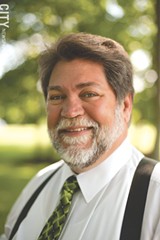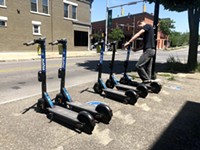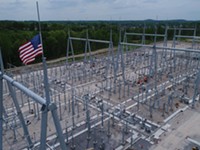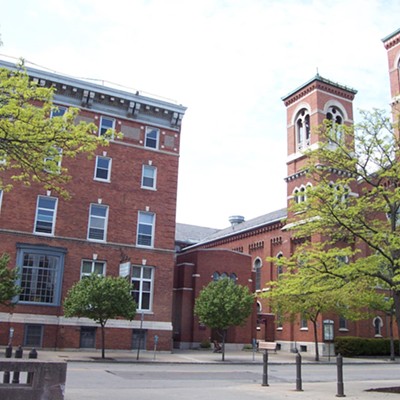[
{
"name": "500x250 Ad",
"insertPoint": "5",
"component": "15667920",
"parentWrapperClass": "",
"requiredCountToDisplay": "1"
}
]
Each year on the Fourth of July, Chili residents are treated to a taste of a truly walkable community. That's when the town closes off a section of Chili Avenue for its annual summer festival, the Chil-E Fest, which pulls residents from the surrounding neighborhoods into the center of town.
Many residents arrive at the festival on foot, and then walk from the food booths to the concert stage to the firehouse to the classic car show in Chili Paul Village plaza, and then close out the night with a fireworks show before walking back to their homes.
It's a one-day explosion that town officials hope to, on a much smaller scale, turn into a way of life for residents of this west-side town.
Roughly speaking, the busy hamlet sits along Chili Avenue between Paul and Chili-Scottsville roads. It's packed with restaurants, small and large retailers, banks, hair salons, and other businesses. It's also home to the town's senior center and the Chili Farmers Market.
But Chili Center feels less like the town's heart and more like a place with a lot of businesses scattered around it. It's disjointed, and there's reason.
The area developed over a period of decades, and with few guiding principles. Buildings lack consistency in appearance and are not arranged cohesively; some buildings sit right at the edge of the road while others are set back. And almost every building and plaza has its own entrance from the street. Chili Center isn't very walkable, either.
"A lot of Chili Center was developed prior to any real good codes in the town," says Chili Supervisor David Dunning. "There was no real good planning process at the time, so it kind of got put together piecemeal."
The time has come, town leaders say, to change that. And the best way to start, they say, is by developing a master plan for the hamlet.
A steering committee is in place, and when the planning process is done, the town will have a blueprint for developing the hamlet into a pleasant, walkable town center filled with family friendly businesses and services, says David Cross, a town Planning Board member and a member of the steering committee. It's a shift that committee members expect to take at least 20 years.
Jim Leahy, a town resident, president of the Chili Fire Department, and steering committee member, says that the group wants Chili Center to evolve as a community destination: a place where older residents can walk around and grab a meal, or where families can bike and get an ice cream cone.
The plan is in its earliest stages, but the steering committee does have some ideas of what it wants to study and what the plan needs to address.
And as the effort unfolds, it'll tie in to other plans that the town is working on, such as its bicycle and pedestrian plan, and other plans already completed, including Chili's 2030 Comprehensive Plan and its Parks and Recreation Master Plan.
At the eastern gateway of Chili Center, just a short distance from the Chili Avenue-Paul Road intersection, are three large retailers: Kmart, Target, and Wegmans.
The stores embody typical suburban commercial development. They're big, fronted by expansive parking lots, and disconnected from much of their surroundings. At first glance, they don't seem to encourage a walkable town center.
But the steering committee members see a big-picture role for the big-box retailers. The stores pull a lot of shoppers into the hamlet and, in the right environment, those customers could also support other businesses, Leahy says. The Wegmans at Chili Avenue and Paul Road is a big draw, he says.
"People just go there," Leahy says. "Leveraging that work, leveraging that destination with a bunch of smaller shops or medium-sized retail outlets to me makes sense."
The steering committee and town officials have identified other ways to breathe new life into Chili Center, too. Some are technical: the town could develop new codes and architectural standards specific to Chili Center, for example. (The town also has an Architectural Advisory Committee, which works alongside the planning and zoning boards.)
"As we all know, buildings get old, people decide to remodel, redo things, tear it down, rebuild," Dunning, the town supervisor, says. "When they do that we have the ability to step in and say 'This is how we would like to see this now be done or redone.'"
The town also owns a significant amount of land in Chili Center, Dunning says, and the plan will lay out some uses for those properties. The plan will also examine the possibility of relocating the town's outdated, undersized community center to Chili Center. It's currently in North Chili, near the edge of the town.
The town's ongoing bicycle and pedestrian master plan is important to Chili Center's future. And it could be crucial for increasing non-automobile traffic in the hamlet, which is part of the town's vision.
Communities across Monroe County have developed similar plans, and the documents aren't just sitting on shelves. Rochester's bicycle master plan led to a proliferation of bike lanes on city streets, bike repair stands along heavily-used trails, and efforts to identify bike-friendly streets.
Chili's bike-pedestrian plan, which is still in its early stages, will help the town identify popular bicycle and pedestrian routes. It'll also recommend ways to make those routes safer and more accommodating for walkers or cyclists, and ways to improve connections between different routes and paths.
Right now, the town doesn't have a good sense of where sidewalk improvements, bike lanes, or other pedestrian and cyclist infrastructure is needed, Dunning says. The plan will help town officials figure out which bike-pedestrian projects to prioritize.
If town officials want to get state or federal funding for bike lanes or better sidewalks, they need to be able to show why each proposed project is crucial. Bicycle-pedestrian plans support those requests, and have helped other local communities get funding.
"Without a plan," Dunning says, "you're not going to get anything."










